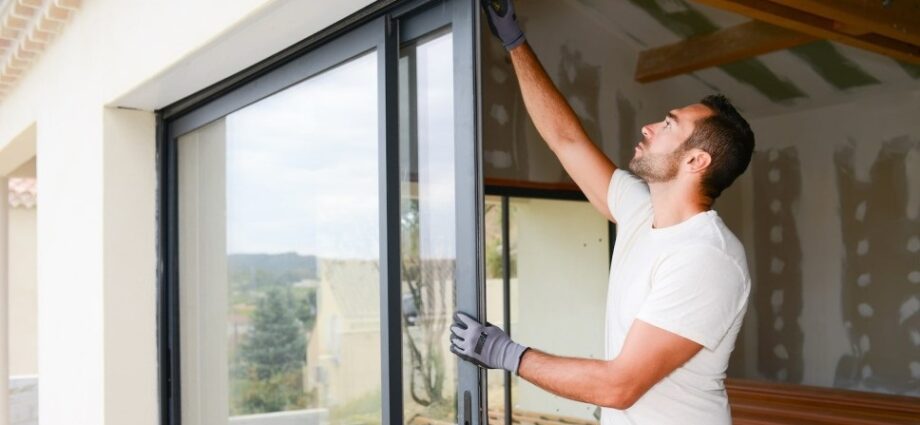Windows are not only functional components of a home but also integral elements of its aesthetic appeal and energy efficiency. Over time, windows may deteriorate, become less efficient, or simply no longer suit the style of the home. Window replacement offers a transformative solution to enhance your home’s appearance and performance. In this detailed guide, we will explore the process of window replacement from initial considerations to installation and beyond.
Assessing the Need for Replacement:
Before embarking on a window replacement project, it’s essential to evaluate the condition of your existing windows and determine if replacement is necessary. Signs that it may be time for replacement include:
- Drafts and Air Leaks: If you feel drafts or notice air leaks around your windows, the seals are compromised, leading to energy loss and decreased efficiency.
- Difficulty Opening or Closing: Windows that are difficult to open or close may have warped frames or damaged hardware, compromising functionality and security.
- Visible Damage: Cracks, chips, or rotting wood are clear indicators of window damage that may warrant replacement to prevent further deterioration and potential water damage.
- Increased Energy Bills: Older, inefficient windows can contribute to higher energy bills due to poor insulation and air leakage. Replacing them with energy-efficient models can lead to significant savings over time.
Choosing the Right Windows:
Once you’ve decided to replace your windows, the next step is selecting the right windows for your home. Consider the following factors:
- Window Type: Choose from various window styles, including double-hung, casement, sliding, awning, and picture windows, based on your preferences and the architectural style of your home.
- Materials: Common window materials include vinyl, wood, aluminum, and fiberglass. Each material has its advantages and considerations regarding durability, maintenance, and aesthetics.
- Energy Efficiency: Look for windows with high energy efficiency ratings, such as ENERGY STAR® certified windows, which can help reduce heating and cooling costs and improve comfort.
- Glass Options: Consider low-emissivity (Low-E) coatings, gas fills, and multiple panes of glass to enhance insulation and reduce noise transmission.
- Customization: Explore customization options such as grid patterns, hardware finishes, and decorative glass to personalize the look of your windows and complement your home’s architecture.
Preparation and Installation:
Before installation, take the following steps to prepare for the window replacement process:
- Measurements: Accurate measurements are crucial to ensure proper fit and alignment. Measure the width, height, and depth of each window opening, and note any irregularities or obstacles that may affect installation.
- Clearing the Area: Remove curtains, blinds, and any furniture or obstacles near the windows to provide ample space for the installation crew to work safely and efficiently.
- Protecting Furniture and Flooring: Cover nearby furniture and flooring with drop cloths or plastic sheeting to prevent dust, debris, and potential damage during installation.
- Scheduling Installation: Coordinate with your chosen window replacement company to schedule a convenient time for installation. Be prepared for some disruption to your daily routine, as installation typically takes one to two days, depending on the number of windows replaced.
During the installation process, the following steps are typically followed:
- Removal of Old Windows: The existing windows are carefully removed to minimize damage to surrounding walls and trim.
- Preparation of Window Openings: The window openings are cleaned, inspected for damage, and prepared for installation, which may involve repairs or adjustments.
- Installation of New Windows: The new windows are installed, ensuring proper alignment, insulation, and sealing to prevent air and water infiltration.
- Finishing Touches: Exterior trim or caulking may be applied to seal gaps and provide a finished appearance. Interior trim and hardware are installed to complete the installation.
Post-Installation Care and Maintenance:
Once the windows are installed, it’s important to properly care for and maintain them to ensure their longevity and performance. Here are some tips:
- Regular Cleaning: Clean your windows regularly using mild detergent and water to remove dirt, dust, and debris. Avoid abrasive cleaners or tools that scratch or damage the glass or frames.
- Check Seals and Weatherstripping: Periodically inspect the seals, weatherstripping, and caulking around your windows for signs of wear or damage. Replace any worn or deteriorated seals to maintain proper insulation and energy efficiency.
- Operate Windows Properly: Follow the manufacturer’s guidelines for operating your windows, and avoid forcing or overexerting them, as this can lead to damage or misalignment.
- Address Issues Promptly: If you notice issues such as air leaks, condensation between panes, or difficulty opening or closing windows, address them promptly to prevent further damage and maintain optimal performance.
Conclusion:
Window replacement is a valuable investment that can enhance the beauty, comfort, and energy efficiency of your home. By assessing the condition of your existing windows, choosing high-quality replacement windows, custom shutters and following proper installation and maintenance procedures, you can enjoy the benefits of improved aesthetics, increased comfort, and potential energy savings for years to come. Whether upgrading to modern, energy-efficient windows or simply refreshing the look of your home, window replacement offers a transformative solution to revitalize your living space.

